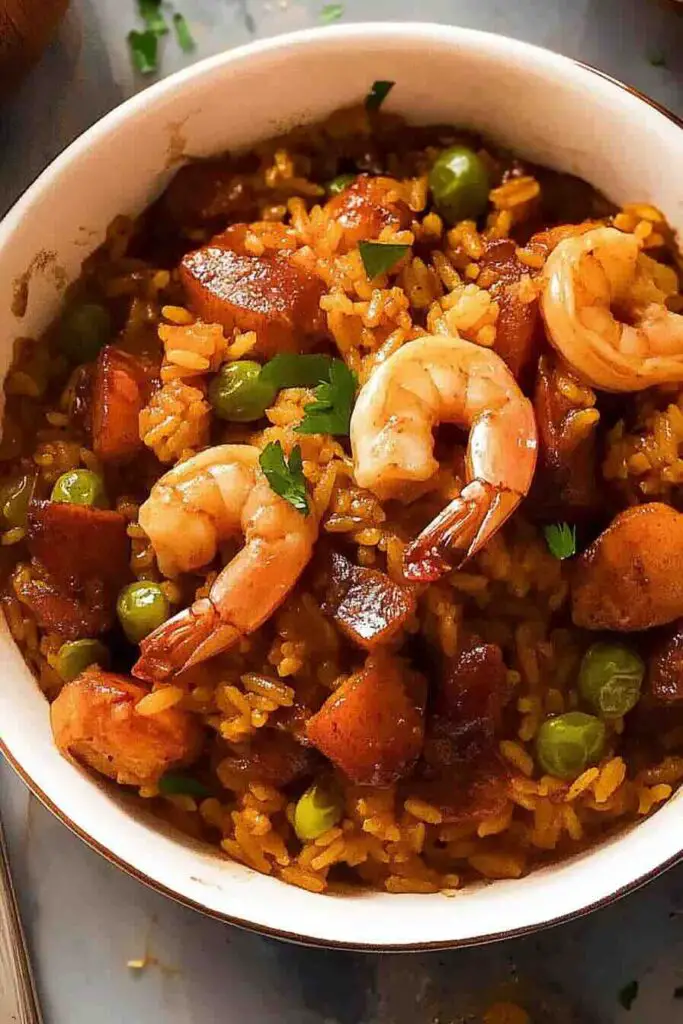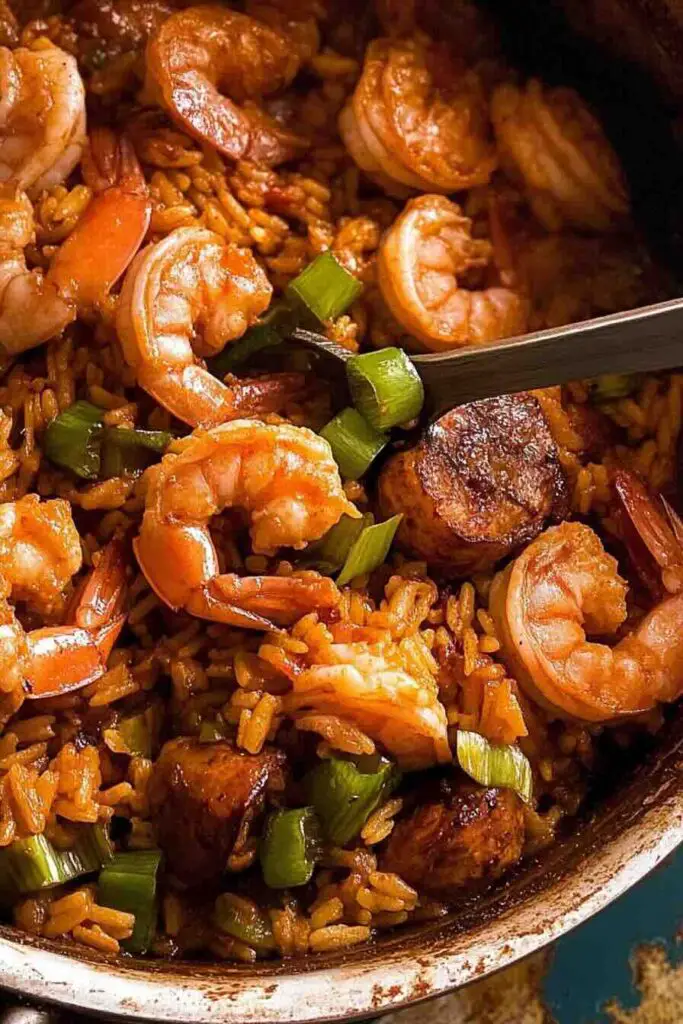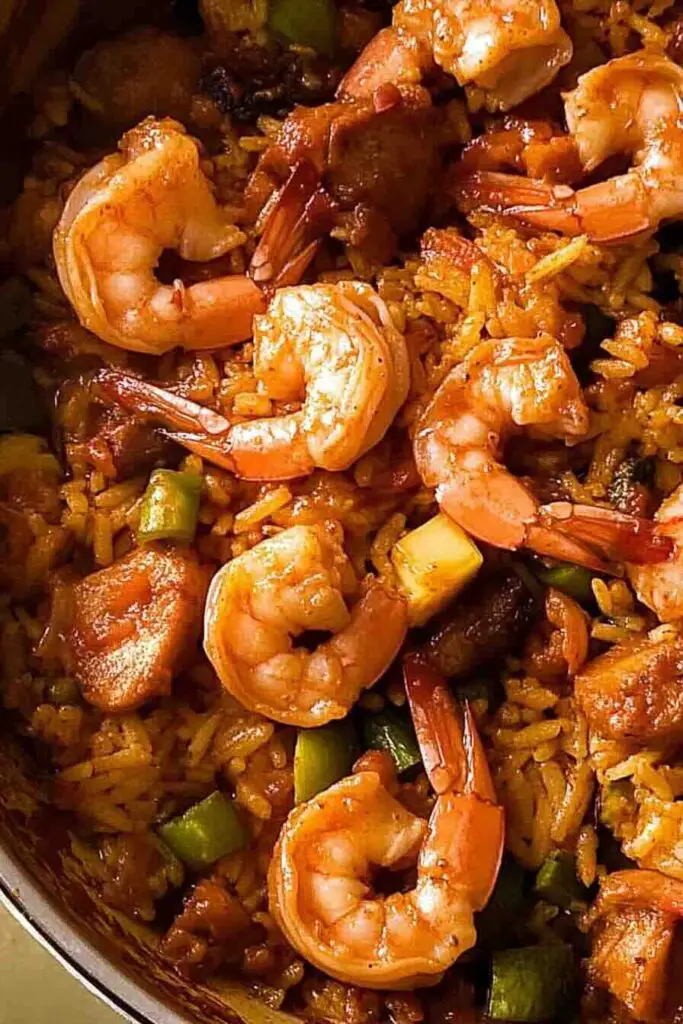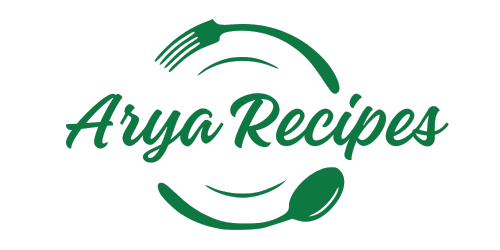Jambalaya! Just saying the word makes my mouth water. This Louisiana-born dish is smoky, spicy, and loaded with rich flavors that scream comfort food at its finest. Whether you’re looking for an easy weeknight dinner, something to impress at a potluck, or just craving some down-home Southern goodness, this dish has got your back. So, grab your biggest pot, roll up your sleeves, and let’s dive into everything you need to know about making the perfect Jambalaya.

What Is Jambalaya?
Jambalaya is a classic one-pot rice dish that hails from Louisiana, blending French, Spanish, and African influences into something uniquely Southern. It’s a hearty, flavor-packed meal with a mix of proteins—typically chicken, sausage, and shrimp—combined with rice and a blend of bold seasonings. The beauty of Jambalaya is that it’s incredibly adaptable, making it the ultimate comfort dish for just about any occasion.
There are two main types of Jambalaya:
- Creole Jambalaya (or “red” Jambalaya): Includes tomatoes, giving it a rich, slightly tangy flavor.
- Cajun Jambalaya (or “brown” Jambalaya): Skips the tomatoes and develops a deep, smoky flavor by browning the meats before cooking.
Whichever you choose, you’re in for a treat!
The History and Culture of Jambalaya
Jambalaya isn’t just food—it’s a piece of Louisiana’s soul.
- Spanish settlers brought paella, which evolved into Jambalaya using local ingredients.
- French influences added rich spices and flavors.
- African and Caribbean cultures brought bold seasonings and a love for communal cooking.
Today, Jambalaya is a staple at festivals, family gatherings, and Sunday dinners across the South. It’s comfort food with a history, and every bite tells a story.
Why You’ll Love This Jambalaya Recipe
This isn’t just any Jambalaya—this is THE Jambalaya. Here’s why:
- Bursting with Flavor – The perfect blend of smoked sausage, juicy shrimp, tender chicken, and Creole seasoning makes every bite an explosion of taste.
- One-Pot Wonder – Less cleanup, more flavor. Everything cooks together, letting the flavors meld beautifully.
- Customizable – Swap proteins, adjust spices, or make it vegetarian—this dish plays well with creativity.
- Meal-Prep Friendly – Keeps well in the fridge and tastes even better the next day.
Ingredients:
When it comes to Jambalaya, the magic is in the ingredients. Each element plays a crucial role in building layers of flavor, creating a dish that’s bold, hearty, and deeply satisfying. While the basics remain the same, there’s plenty of room to tweak and experiment based on your personal preferences or what you have on hand.
Proteins: The Heart of Jambalaya
The combination of meats and seafood in Jambalaya gives it that signature, rich taste. Traditional recipes typically include:
- Chicken: Bone-in, skin-on thighs add the most flavor, but boneless thighs or even chicken breasts work well if you prefer leaner meat.
- Andouille Sausage: This smoky, spicy sausage is a staple in Louisiana cooking, but if you can’t find it, substitutes like kielbasa, chorizo, or even smoked bacon will provide similar depth.
- Shrimp: Fresh or frozen shrimp work, but make sure they are deveined and peeled for ease of cooking. Jumbo shrimp add a luxurious touch, but medium-sized shrimp are more commonly used.
Want to mix things up? Try using pork, duck, turkey sausage, or even rabbit for a more rustic, traditional take. If seafood is your thing, feel free to toss in crawfish or lump crab meat for an extra coastal kick.
Vegetables: The Flavor Foundation
Every great Jambalaya starts with the Louisiana “Holy Trinity”—a fragrant mix of three key vegetables that forms the backbone of countless Creole and Cajun dishes:
- Onion: Yellow or white onions work best, bringing a mild sweetness that deepens as they cook.
- Celery: Adds a fresh, slightly peppery crunch that balances out the richness of the dish.
- Bell Peppers: Green bell peppers are the classic choice, but using a mix of red, yellow, and orange adds more color and a hint of natural sweetness.
Beyond the Holy Trinity, garlic is a must—it adds a punch of flavor and makes everything taste richer. Some cooks also add diced tomatoes for a Creole-style Jambalaya, while others keep it tomato-free for a more Cajun approach.
Rice & Liquids: The Base That Brings It All Together
- Long-grain white rice is the best choice for Jambalaya. It absorbs flavors beautifully while maintaining its structure, keeping the dish from turning mushy. Avoid using short-grain or instant rice, as they don’t hold up well to the cooking process.
- Chicken broth or stock provides a rich, savory foundation, helping to cook the rice while infusing it with even more flavor. Some recipes also use seafood stock, especially when incorporating shrimp or other shellfish.
- Tomatoes (optional) are used in Creole Jambalaya, lending a slight acidity and richness to the dish. Crushed tomatoes or diced canned tomatoes work well. Cajun Jambalaya skips the tomatoes altogether for a deeper, smokier taste.
Spices & Seasonings: The Soul of Jambalaya
The right blend of seasonings takes Jambalaya from good to unforgettable. A well-balanced mix of spices gives the dish its signature bold, slightly smoky, and spicy kick. Essential seasonings include:
- Paprika (smoked or regular) for warmth and a hint of smokiness.
- Cayenne pepper for heat—adjust according to your spice tolerance.
- Garlic powder & onion powder to deepen the savory flavor.
- Dried thyme & oregano for an herby, earthy note.
- Salt & black pepper to enhance and balance all the flavors.
- Bay leaves for subtle depth—just remember to remove them before serving!
For an extra boost of heat, a splash of Louisiana hot sauce or a sprinkle of red pepper flakes will take things up a notch.
Fats & Oils: For That Extra Flavor Punch
- Butter adds richness and helps develop flavor when sautéing the vegetables.
- Vegetable oil or olive oil is used for browning meats and ensuring everything cooks evenly.
- Bacon (optional but amazing!) can be rendered at the beginning of cooking, providing a smoky base and an extra layer of depth.

How to Make Jambalaya (Step-by-Step)
1. Prep Your Ingredients
Chop your onions, celery, and bell peppers into small, even pieces. Slice the sausage and cut the chicken into bite-sized chunks. Get everything ready before you start cooking—Jambalaya moves fast!
2. Sear the Meats
- Brown the andouille sausage in a large pot to release its smoky, spicy oils. Remove and set aside.
- Sear the chicken in the same pot until golden brown. This builds incredible depth of flavor.
3. Build the Flavor
- Sauté the “holy trinity” in the same pot, scraping up the browned bits.
- Add garlic and your spice mix—let them toast for a few seconds to bring out their full aroma.
4. Add Rice and Liquids
- Stir in the rice, coating it with all those incredible flavors.
- Pour in chicken broth, diced tomatoes (for Creole-style), and a bit of tomato paste.
5. Let It Simmer
- Cover and cook on low until the rice is perfectly tender.
- Don’t peek too often—trapped steam is your friend!
6. Add Shrimp and Finish
- Stir in the shrimp and let them cook gently for a few minutes.
- Toss in some green onions for a fresh pop of color and flavor.
And just like that—boom! You’ve got yourself a pot of Jambalaya that’s so good, it might just become a weekly staple.
Variations & Toppings for Jambalaya
Jambalaya is one of those dishes that can be easily customized to suit different tastes, dietary needs, or just whatever ingredients you have available. While the classic versions stick to a combination of chicken, sausage, and shrimp, you can swap out ingredients to create your own perfect bowl of Jambalaya.
Protein Variations: Mix It Up!
- Go all-seafood: Replace chicken and sausage with crawfish, crab meat, scallops, or even lobster.
- Make it meaty: Add diced pork shoulder or shredded duck for a heartier, richer dish.
- Vegetarian Jambalaya: Skip the meat and seafood altogether! Add extra bell peppers, mushrooms, zucchini, and even kidney beans for a plant-based twist.
Spice Adjustments: Mild or Wild?
- If you love heat, add extra cayenne, diced jalapeños, or even a few dashes of hot sauce.
- If you prefer a milder dish, reduce the cayenne and swap andouille sausage for a less spicy option like kielbasa.
Toppings That Elevate Your Jambalaya
- Fresh parsley for a burst of freshness.
- A squeeze of lemon to brighten up the flavors.
- Sliced green onions for a mild oniony kick.
- Shredded cheese for a creamy contrast (untraditional, but delicious!).
Nutritional Insights
Jambalaya is a well-balanced meal packed with protein, fiber, and essential vitamins. Here’s a general breakdown of what you’re getting in a single serving:
- High in protein: Thanks to the combination of chicken, sausage, and shrimp, each serving delivers a hefty dose of protein to keep you satisfied.
- Rich in vitamins: Bell peppers, onions, and tomatoes provide essential nutrients like Vitamin C, Vitamin A, and potassium.
- Moderate calorie content: A typical serving ranges from 600 to 800 calories, depending on ingredient choices.
- Customizable for health: Want to lighten it up? Use leaner meats, reduce oil, and swap white rice for brown rice or cauliflower rice.
Pro Tips & Tricks
- Avoid overcooking shrimp: Add them in the last few minutes so they stay juicy.
- Let the rice rest before serving: This helps it absorb the last bit of flavor and prevents mushiness.
- Try baking instead of stovetop cooking: This creates even heat distribution, making sure the rice cooks perfectly.
Storage & Health Tips
Jambalaya stores well, making it a great meal prep option.
- Refrigerate: Store in an airtight container for up to 4 days.
- Freeze: Portion out and freeze for up to 3 months.
- Reheat: Add a splash of broth or water when reheating to maintain moisture.

FAQs
1. Can I make Jambalaya in a slow cooker?
Yes! Just wait to add the rice until the last hour of cooking to prevent it from becoming mushy.
2. Can I use brown rice instead of white rice?
Absolutely, but brown rice takes longer to cook, so adjust the liquid and simmer time accordingly.
3. How spicy is Jambalaya?
It depends on your seasoning! Creole seasoning and andouille sausage add some kick, but you can adjust the heat to your liking.
Before You Go…
Craving more goodness? Check out my recipe for Beef Stew or Pot Roast next! It’s just as comforting, indulgent, and easy to make. You’re going to love it! ❤️
Don’t forget to subscribe for more mouthwatering recipes straight to your inbox!
Print
Jambalaya: The Ultimate Southern One-Pot Wonder
- Prep Time: 15 minutes
- Cook Time: 35 minutes
- Total Time: 50 minutes
- Yield: 6 1x
Description
This authentic Jambalaya recipe is a bold and flavorful one-pot meal loaded with smoky sausage, tender chicken, and juicy shrimp. Infused with classic Creole and Cajun spices, this dish is perfect for weeknight dinners, gatherings, or meal prep. Easy to make and packed with comforting Southern flavors, this Jambalaya will transport you straight to Louisiana with every bite!
Ingredients
Proteins:
- 1 lb (450g) chicken thighs, cut into bite-sized pieces
- 12 oz (340g) andouille sausage, sliced
- ½ lb (225g) shrimp, peeled and deveined
Vegetables:
- 1 large onion, finely chopped
- 2 celery stalks, diced
- 1 bell pepper (red, green, or yellow), diced
- 3 cloves garlic, minced
Grains & Liquids:
- 2 cups long-grain white rice
- 3 ½ cups chicken broth
- 1 can (14.5 oz) crushed tomatoes
- 2 tbsp tomato paste
Spices & Seasonings:
- 1 tsp smoked paprika
- ½ tsp cayenne pepper (adjust to taste)
- 1 tsp garlic powder
- 1 tsp onion powder
- 1 tsp dried thyme
- ½ tsp black pepper
- 1 ½ tsp salt (or to taste)
- 1 bay leaf
Fats & Oils:
- 2 tbsp vegetable oil
- 1 tbsp butter
- 2 slices bacon (optional, for extra smokiness)
Garnish:
- 2 green onions, sliced
- Fresh parsley, chopped
- Lemon wedges (optional)
Instructions
- Prep the Ingredients:
- Dice the vegetables and set them aside.
- Slice the sausage and cut the chicken into bite-sized pieces.
- If using bacon, chop it into small pieces.
- Sear the Proteins:
- Heat 1 tbsp oil in a large Dutch oven or deep skillet over medium-high heat.
- Cook the bacon (if using) until crispy, then remove it and set aside.
- In the same pot, brown the sausage slices for 2-3 minutes. Remove and set aside.
- Add chicken to the pot and sear until golden brown, about 5 minutes. Remove and set aside.
- Build the Flavor Base:
- Add the remaining oil and butter to the pot.
- Sauté the onion, celery, and bell pepper until softened, about 4-5 minutes.
- Stir in the minced garlic and cook for another 30 seconds until fragrant.
- Toast the Spices & Add Liquids:
- Stir in the smoked paprika, cayenne, garlic powder, onion powder, thyme, black pepper, and salt.
- Add the tomato paste and stir well to coat the vegetables.
- Pour in the crushed tomatoes and chicken broth, mixing well.
- Cook the Rice:
- Stir in the rice and bay leaf, then return the sausage, chicken, and bacon to the pot.
- Bring to a simmer, then cover and reduce heat to low. Let cook for about 20-25 minutes, stirring occasionally.
- Add the Shrimp & Finish Cooking:
- When the rice is nearly done, add the shrimp and mix gently.
- Cover and cook for another 5 minutes until the shrimp turn pink and opaque.
- Rest & Serve:
- Remove from heat and let it rest for 5 minutes.
- Discard the bay leaf and fluff the rice.
- Garnish with green onions, parsley, and a squeeze of lemon if desired.
- Serve hot and enjoy!
Notes
- Spice Level: Adjust cayenne and smoked paprika for more or less heat.
- Rice Choice: Long-grain white rice works best, but brown rice can be used (increase liquid and cooking time).
- Make It Smokier: Smoked sausage, smoked paprika, and bacon enhance the smoky depth.
- Storage: Keeps in the fridge for up to 4 days; reheats well with a splash of broth.
- Freezing: Freeze in airtight containers for up to 3 months. Thaw overnight before reheating.
Nutrition
- Calories: 707
- Sugar: 6g
- Sodium: 1050mg
- Fat: 28g
- Carbohydrates: 75g
- Fiber: 4g
- Protein: 41g
